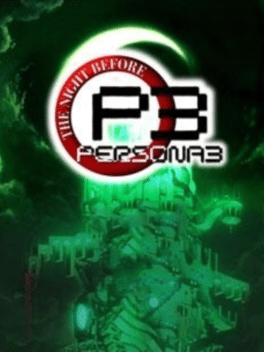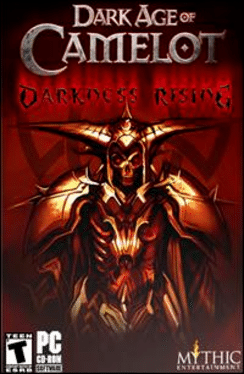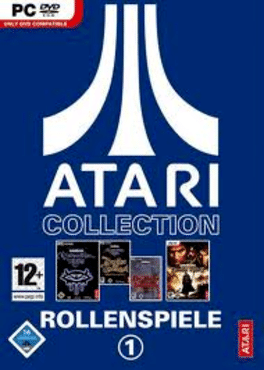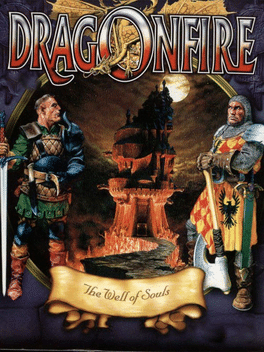Most Popular Xbox360 Games - Page 315
-
Mars Saga
1988
Mars Saga
1988
Mars Saga is a role-playing video game developed by Westwood Associates and published by Electronic Arts for the Commodore Commodore 64 in 1988. Following a legal battle against Electronic Arts for rights on the franchise, Westwood turned to Infocom to publish the Apple II and MS-DOS ports. -
Shadowbane: The Rise of Chaos
Rise of Chaos was the first of two expansion packs to be added to Shadowbane. It introduced the game to the Nephilim race, Sentinel & Doomsayer classes, and Conjurer & Darksworn disciplines. -
The Magic Candle III
1992
-
Waku-waku Puyo Puyo Dungeon
1998
Waku-waku Puyo Puyo Dungeon is a roguelike dungeon crawler featuring characters from the Madou Monogatari and Puyo Puyo franchises. -
Ridegear Guybrave
1997
-
Sorcerian Original
2000
Sorcerian Original
2000
A remake of the classic RPG Sorcerian for Windows PCs. In Sorcerian you created a party of four adventurers and set off to solve a series of scenarios each with their own unique quests and challenges, which usually involve exploring a specific dungeon and retrieving some treasure or slaying a specific monster. Gameplay is mostly action-oriented with the addition of upgradable stats and the ability to equip different weapons and magic items. -
Dengeki Gakuen RPG: Cross of Venus
2009
The player assumes the role of an unnamed protagonist attending Dengeki Academy who stumbles into a fight between heroines from Dengeki Bunko novel worlds and the evil organization Zetsumu. The reality-based world of Dengeki Academy and the novel worlds have become connected and the player is able to help the Dengeki Bunko heroines fight the Zetsumu by going between the worlds. Eight heroines are presented including Shana from Shakugan no Shana, Kino from Kino's Journey, and Kana Iriya from Iriya no Sora, UFO no Natsu. Each heroine fights with her own unique style of weapon, combos, and special attacks. -
Parallel Kingdom
Parallel Kingdoms is an online RPG that uses real world maps with GPS. It is made for the iPhone, iPod Touch and any other phone running Google Android. The new version, "Parallel Kingdom" is now available for free in the iTunes App Store and Android Market. -
Shissou, Yankee Damashii
2003
A Japan-only MMORPG with a Japanese high school motorcycle gangwars setting. -
Blazer Drive
2008
Blazer Drive
2008
Blazer Drive is a, Japan exclusive, turn-based role playing game based on a parallel story from a Japanese manga of the same name. It introduces a battle system involving stickers or "MySticker" and the use of the touch screen. -
Cybermercs: The Soldiers of the 22nd Century
1998
A Diablo-style sci-fi Action RPG with a mission-based structure. -
Pyrrhic Tales: Prelude to Darkness
2002
Pyrrhic Tales: Prelude to Darkness is a dark, sophisticated fantasy CRPG featuring complex, turn-based tactical combat, 3D graphics, a skill-based character advancement system, and an intricate, involved plot. Prelude thrives on the tradition of true role-playing games, allowing players to craft a diverse team and become a part of a large and intricate world with a rich history, hundreds of non-player characters, and nearly endless paths and subplots. Prelude takes place in a huge river valley, surrounded on all sides by impassable cliffs. The Children of the Flame have been at peace with the People of the River for a thousand years. But something has changed. Ethnic tensions have suddenly escalated, culminating in bursts of terrorists violence. Murders, once rare crimes of passion, have begun occurring at an alarming rate. A plague has started to attack the crops and devastate the once plentiful harvest. The player must unravel the dark mysteries and resolve the conflict threatening to consume The Valley. -
Honoo no Ryourijin: Cooking Fighter Hao
1998
Chinese cooking themed action/rpg game released for the Sony Playstation by Nippon Ichi Software in 1998. It features a story and versus mode. -
EverQuest: The Buried Sea
2007
The Buried Sea is the thirteenth expansion for the popular MMORPG franchise, EverQuest. -
Dragonfire: The Well of Souls
1999
Based on the Swedish pen & paper RPG "Drakar och demoner", Dragonfire: The Well of Souls is an isometric RPG where you're tasked with defeating the evil arch magician Vicotnik, determined to conquer the world of Ereb Altor. -
Ultima Online: Samurai Empire
2004
Samurai Empire is the seventh edition (sixth expansion) of Ultima Online. It adds unique Japanese-themed content, such as the new Ninja and Samurai professions, as well as a new landmass, the Tokuno Islands (the Land of the Feudal Lords first introduced in Ultima I). This expansion also introduces a powerful new guild system, new dungeons, enhancements to the house customization system, and a whole collection of new monsters, weapons, and wearable items.



















